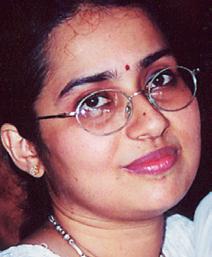
3 minute read
in
from 2012-07 Sydney (1)
by Indian Link
BY uSha raManuJaM arVInD

SBS recently launched an interactive online tool featuring demographic data gathered in the 2011 Census, so that Australians can explore the results of the Census data. SBS Census Explorer gives Australians access to some of the most important Census data, bringing it to life in maps, charts and graphs that are interactive and easy to read. Users can compare languages and places and learn more about the makeup of their communities. Information is being progressively added as it becomes available from the Australian Bureau of Statistics (ABS).
Indian Link reviewed demographic data released to offer a concise census of information on the Indian community. Here are our findings.
At a glance
• 390,904 Australians of Indian ancestry
• 1.5% or 295,361 were born in India
• 200,000 Indians arrived since 2001
• Among fastest growing ethnic groups
• 275,500 Hindus (fastest growing religion)
• 111,351 Hindi speakers, featuring in top 10 languages spoken
• Highest number in 15-64 demographic
• 10% new migrants arrived with job in hand
• 35% reported difficulty in getting one. Of this, 64% reported lack of experience or references
• 23% lack of local contacts
• Of 90% of skilled migrants, 87% found a job
• 53% in their area of expertise
• 92% of skilled migrants reported wages/salary as main source of income
• 43% of recent migrants had obtained citizenship
• 55% of temporary residents were students.
Student intake peaked at 65,000 in 2008-9
These figures released by the Australian Bureau of Statistics after unveiling the latest five-year Census only confirms what most already suspect – that skilled migration and international student intake has fuelled a dramatic spurt in the Indian presence down under in the new millennium. From .5 to 1.5% of the Australian population which currently stands at 22.6 million.
The estimated resident population (ERP), a core function of the ABS, is used for a wide variety of purposes including the distribution of Australian Government funds to state, territory and local governments, as well as in the determination of the number of seats for each state and territory in the House of Representatives.
At the 2006 Census 147,106 Australian residents indicated that they were born in India, of which 79,025 held Australian citizenship. NSW topped the list with 57,156 residents, closely followed by Victoria (52,853) and Western Australia (15,157). 64,968 stated they were Hindu, 49,975 declared they were Christian and 26,500 declared they were Sikh. Other minorities include Muslims and Zoroastrians. 243,722 Australian residents declared that they had Indian ancestry, either alone or in combination with another ancestry.
The Indian-born community more than doubled between 2004 and 2009 to 308,542, making it the second largest non-Anglo community in Australia after Chinese-born Australians. In 2009 there were an additional 90,000 Indian students studying at Australian tertiary institutions.
Overseas migration
As of 30 June 2010, 27% of the population was born overseas (6.0 million people), third highest in the world behind Singapore and Hong Kong, the lowest being China, India and Vietnam.
While UK and NZ still account for the largest chunks of the pie, India and China have moved up the ladder. 76% of the overseas population in this category was of working age 15-64.
International migration is a volatile phenomenon influenced by a wide range of demographic, social, economic and political determinants and consequences at the global, regional and national level.
In 2009-10, the preliminary estimate of net overseas migration (NOM) was 215,600 persons, representing 57% of Australia’s population growth for the year. Victoria and Queensland had the largest inflow.
Between 2000 and 2010, persons born in Nepal had the highest rate of increase in Australia’s population (of the top 50 countries of birth at 30 June 2010), with an average annual growth rate of 29.1%. However, this growth began from a small base of 2,300 persons at 30 June, 2000. Those born in India had third fastest growth after Sudan (13.5%). India also figures in the highest proportion of people in 15-64-age category.
International students
In 2008-09, the net number of international students being added to Australia’s population reached an all time high of 122,400 students, bringing in export earnings of $15.9 billion. These international students contributed to 27% of Australia’s population growth in 2008-09. Of these, 45,199 were from India alone, jumping significantly from 9553 in 2004-5. Nepal was third highest at 10,697. Victoria









